I send Direct Debits with MoraBanc Online, how will the SEPA Direct Debit regulation affect me?
MoraBanking | 05.25.2021 | MoraBanc editorial staff

Andorra will join the SEPA Direct Debit (SDD) scheme in May 2021. This will lead to changes, such as individuals and business that issue Direct Debits having to use a new standardised Direct Debit remittance file format, have a mandate or Direct Debit order signed by the customer and have a new SEPA Creditor Identifier to replace the ABA company code.
To find out all about this regulation, read our SEPA Direct Debit post: everything you need to know about the new European regulation on Direct Debits.
Over recent months we have changed our online banking system to make adapting to the new SEPA regulation as easy as possible. The Remittance Management System (GRS) application allows you to create Direct Debit files using the SEPA Direct Debit standard.
At MoraBanc we have implement a process of automatic adaptation of all Direct Debits created before 10 May 2021 to comply with the SEPA Direct Debit scheme, in addition to automatically creating the identification data for all mandates from before the aforementioned date. For this purpose, we applied the following criteria:
- Unique mandate reference: we took the customer reference from the Direct Debit created using the ABA-09 standard.
- BIC: calculated automatically via the Direct Debit’s IBAN.
- Scheme: all mandates have been created using the CORE scheme.
- Payment type: all current mandates will be defined as recurring payments.
- Mandate signature date: all current mandates have been created with signature date 31 March 2021.
- Mandate description: this field is optional and has been left blank.
- Credit transfer description: as these Direct Debits were originally created as ABA-09, we have limited the description lines to 140 characters.
We will continue to accept the ABA-09 standard Direct Debit files and temporarily convert them to the new SEPA Direct Debit scheme for approximately one year so that payees or issuers can adapt their IT systems to the new regulation. However, the description field in the interbank interchange system is limited to 140 characters by SEPA regulation.
For a period of one year, ABA-09 standard credit transfer files will be accepted to enable businesses and companies to adjust their systems to send credit transfers using the SEPA Credit Transfer scheme, i.e. by means of credit transfer files rather than Direct Debits. However, the description will be limited to 140 characters as this has been established in the interbank exchange system.
Changes to MoraBanc online banking
The most important changes in MoraBanc Online’s Remittance Management System (GRS) application are in the following processes and operations:
1. Create customer
The main new feature when creating a customer in the Direct Debits module is the need to supply the payer’s BIC. Simply by supplying the customer’s IBAN, the GRS application will automatically calculate the bank and BIC fields. Once you have completed the process, a mandate and a Direct Debit will be created for that customer, with some customer data already preloaded so that you only have to enter the Direct Debit mandate and data.

2. Create mandate
You can create a mandate immediately after creating a customer. If you do so from the customer confirmation screen, the customer’s data will be loaded automatically in the mandate and you will only have to fill in details specific to the mandate:
- Unique mandate reference (UMR).
- Scheme.
- Payment type.
- Mandate signature date.
- Description (optional).
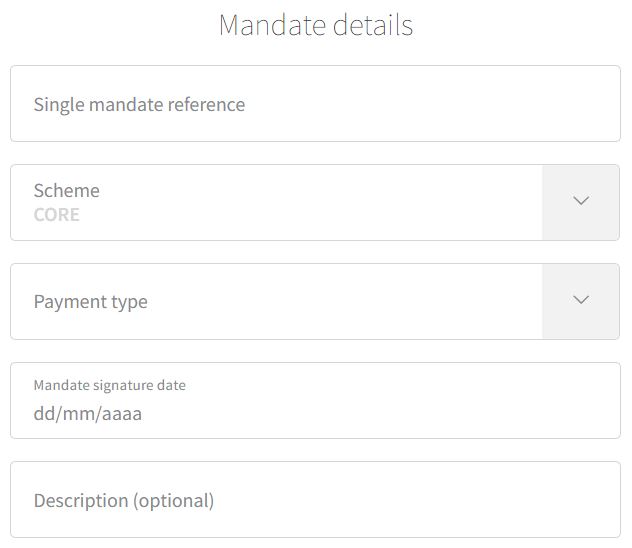
It is important to bear in mind that mandates created in MoraBanc’s online banking only constitute data to create a Direct Debit collection file. As a creditor, it is your responsibility to create and safeguard the mandates completed and signed by your customers.
3. Create a Direct Debit
Before creating a Direct Debit for a given customer, you must first create the corresponding mandate record. After selecting the unique reference of the mandate to which the Direct Debit is linked, you only have to enter the amount and the description. Remember that with the new SEPA-DD regulation Direct Debit descriptions have a maximum length of 140 characters and a single line.

4. Import mandates
With the entry into force of the SEPA regulation, you will be able to import mandates in Excel format, in the same way that you imported Direct Debits under Andorran Banking standard 09 (ABA-09) until now. The .txt files of the ABA-09 standard are no longer valid for this operation, but you can use the new SEPA XML format instead. As regards the files’ content, the only difference is that you have to add the information required for the mandate’s mandatory fields: BIC, unique mandate reference, scheme, payment type and mandate signature date.
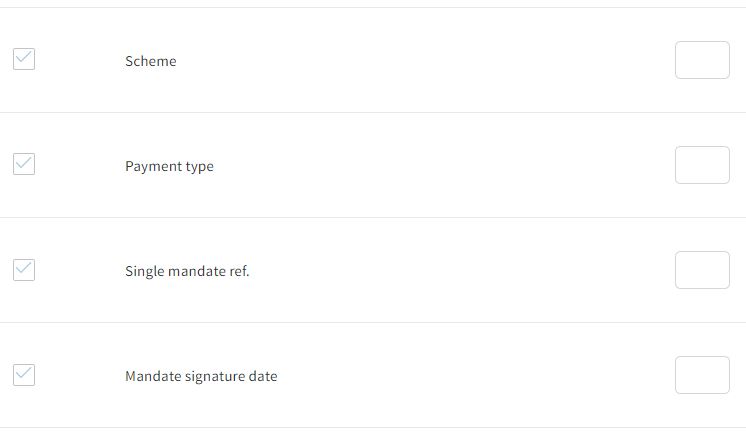
5. Import Direct Debits
During the period that the two standards coexist, you will have the option to import Direct Debits under either ABA-09 or SEPA-DD. With both of these options you can import via an Excel file or each standard’s specific format (.txt format for ABA-09 and XML for SEPA-DD).
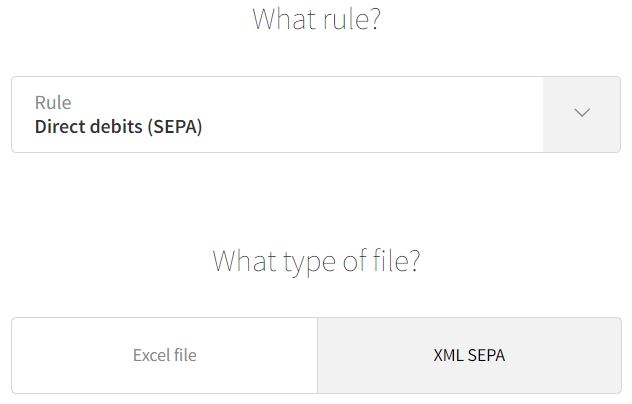
Once you select the standard, if you choose Excel format it will work as usual. However, if you choose the SEPA XML format, the GRS application will identify each field and link it directly with the corresponding field in online banking. We suggest you use the Excel format for this operation as it is less complex.
6. Customer file
A customer can have more than one active mandate or Direct Debit. We have created a new field so you can view the active mandates for each customer. By going into the details for each of them you can see the date of signature of the mandate and the type of payment.
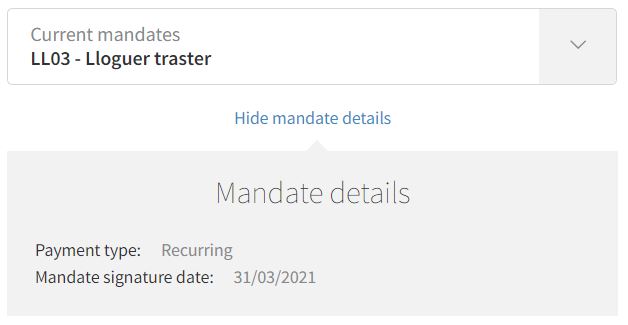
7. Send files
If you want to send remittance files that you have generated with your own application you can do so as before. Go to the send remittance operation, select the type of file you want to send, upload it from your computer and add a description. If you select SEPA Direct Debits, make sure that you have generated the XML file correctly.
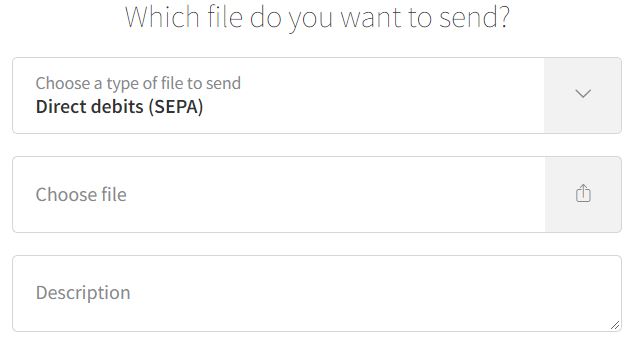
In step 2 of sending the SEPA XML file, you will see that the ‘Payer’ field, which until now corresponded to the ABA company code, has been replaced by the ‘Creditor identifier’.
If you have any questions about SEPA Direct Debit remittance management, please contact us by sending an e-mail to suport.digital@morabanc.ad, explaining your question. We will answer as soon as possible.
For more information on the impact of the new regulation in Andorra, please consult the SEPA Guide published by Andorran Banking.
And remember that you can also contact your account manager or our Telebanc (884 884) if you need help.
Information on the processing of personal data
In compliance with Law 15/2003 of 18 December on protection of personal data, the customer authorizes that the applicant’s personal data entered on this form will be incorporated into files owned and managed by MORA BANC GRUP, SA – MORA BANC, SAU (hereafter referred to as “MoraBanc”) to process the requested service and, if necessary, to comply with the contracts finally entered into, and also to ensure correct operational procedures.
The applicant expressly authorises MoraBanc to send him/her commercial and promotional communications for products and services and information on the Bank itself, social or other activities, in hardcopy by post or by electronic means (among others, short messages (SMS) to mobile phones, e-mail, etc.). This consent can always be withdrawn, without retroactive effect.
The fact of filling out this form implies that the applicant acknowledges that the information and personal data provided are true, accurate and correct; otherwise, MoraBanc declines all responsibility for the lack of truthfulness or correctness of the data.
The applicant authorises the data provided to be communicated or shared with third parties forming part of the MoraBanc business group, entities which are primarily active in the financial, insurance and service sectors. The applicant is considered as having been informed of this transfer of information by means of this clause. The applicant accepts that he/she may be sent information on any product or service marketed by these companies.
The data processing manager is MoraBanc. The applicant is hereby informed that the rights of access, rectification, suppression or opposition may be exercised in the terms established in current legislation.






